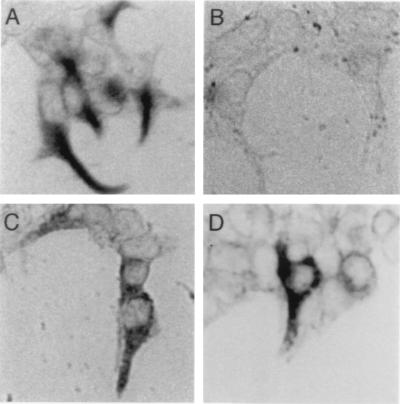Figure 3.
Mammalian expression cloning and epitope mapping of the antigen recognized by scFv-278. (A) Immunocytochemical labeling demonstrates scFv-278 immunoreactivity of cells transfected with the cDNA clone isolated from a bullfrog saccular expression library. Transfected cells, demarked by a colored reaction product, and untransfected cells are shown. (B) Cells transfected with the isolated cDNA clone are not labeled when the scFv is omitted. (C) Transfection with a construct (Δ481–529) whose product was truncated after aa 480 yields immunopositive cells, indicating that the epitope does not lie in the carboxyl-terminal region. (D) Transfection with a construct (EGFP:168–393:FLAG) that contains cytokeratin residues 168–393 results in immunopositive cells. The epitope therefore occurs in the relatively conserved α-helical coiled-coil domain of the molecule.

